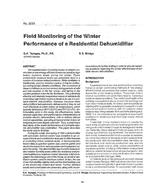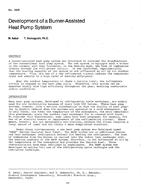This paper presents information from a monitored series of Habitat for Humanity homes built in the eastern part of the north central United States over a period of several years. The study was initiated to review several heating system alternatives commonly considered for Habitat houses. Many heat system analyses focus on the fuel cost over the course of a heating and cooling system. In this case study, as in other case studies, the heating systems performed more or less as expected. However, it became apparent as the study progressed that user preferences played a large role in the overall operational cost of the heating and cooling systems. In fact, for these building types, analysis of comparative qualitative factors may be more productive than narrowly focused fuel conversion efficiency analysis in areas with market conditions similar to those encountered in this study. Heating systems selected for the reviewed Habitat homes included electric baseboard, fast-acting radiant ceiling panel heaters, and sealed combustion high-efficiency gas warm air furnaces. Air conditioning was not specified. The in-space room air conditioner was factored out of the analysis in the sole case where air conditioning was used as much to muffle street noise as to cool. While the electric systems are compared in some detail, it became apparent that in these examples, the total annual combined gas and electric utility cost comparison was more informative than fuel conversion efficiency alone.
Units: Dual
Citation: Symposium Papers, Atlanta, GA, 2001
Product Details
- Published:
- 2001
- Number of Pages:
- 6
- File Size:
- 1 file , 500 KB
- Product Code(s):
- D-7147


